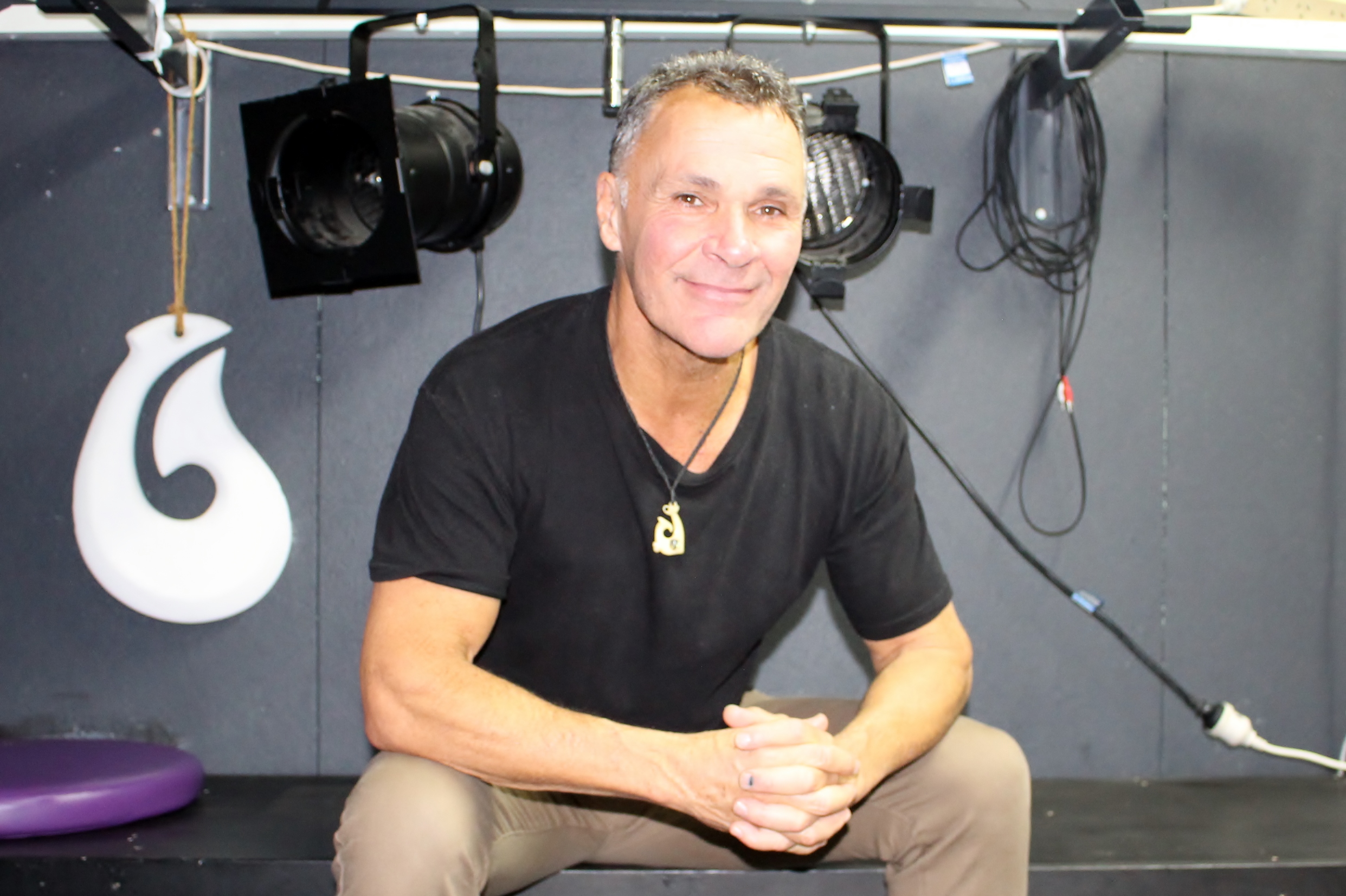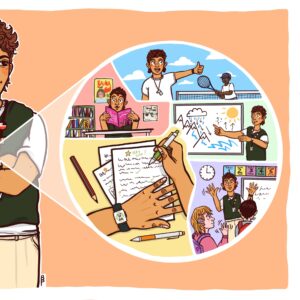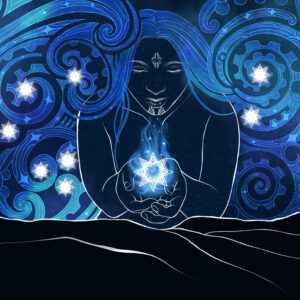What is your role at the school?
I’m the drama teacher. I also tutor kapa haka and do other bits and pieces. But mainly performing arts and drama with the kids. I’ve been here 20 years – quite a while! Drama is one of our specialist subjects, like music and cooking. I teach eight different groups throughout the week, for an hour and a half each.
How has drama been used differently at Northcross since you reopened post-lockdown?
It’s the first time that we’ve had something like this happen, of course, outside of holidays, with such a lengthy time away from school. We had a staff meeting to get together and talk about how we were going to approach the delivery of the curriculum with the students and what our collective attitude towards the children would be – rather than trying to go back to something that was “normal”.
Our principal said he wanted some drama activities, some icebreakers, that the rest of the staff might use in the context of their classroom, rather than students just coming to me for drama.
So I did a workshop for about 40 minutes looking at improv, drama games and the use of roleplay to go over the Covid-19 aspects and experiences. And then the expectation was that they go off and try to integrate it with the rest of their classroom teaching. I was really impressed, because most of them did that, and they came back and said what a great time they had. They wanted some more drama activities to follow up with their children in their classrooms.
It was good to see the rest of the staff acknowledging that drama can be a good way to get children to open up about their different experiences and their memories and their feelings about things like Covid, and experiences in their life that make an impact.
“Drama can be a good way to get children to open up about their different experiences and their memories and their feelings about things like Covid.”
When I ran through things with staff first, I started with games. I workshopped with about eight teachers and tried to make it so they could imagine how they could do it with their classes – so, pushing all the desks back and using drama in a way that respected the subject of drama and wasn’t just a little game to do to warm up before they’d get back to the “serious business” of teaching as it was before.
How long will this kind of work be happening in the classrooms?
It’s starting to filter off. Most of the teachers used the exercises in the first couple of days back. But I’ll keep going to the end of next week with the groups that I have, exploring Covid and ideas relating to it. We had success schoolwide with those initial games and activities, but most of it falls now to what I’m doing with my classes.
What have been some of the most successful exercises?
I adapted a well-known game and called it “Covid Fruit Salad” where kids all sit around on their chairs, and there’s a hat where inside there’s a slip of paper that says, for example, “Did you cut anybody’s hair during Level 4 because the hairdressers were shut?” And all those kids who are sitting down and who did that, they stand up and move to another seat. There might be only three of them who cut Mum’s hair.
The idea is to stop and ask the kids to tell the rest of the group, “What sort of cut did you give her? Was Mum pleased with the outcome?” and all the time there’s one kid who misses out on a seat, so there’s a new person in the middle, and they choose a piece of paper: “All those children who did baking”, so lots of the kids get up and move to another seat – and there’s always one person who’s going to miss out on a seat. Then you stop and you get two or three kids explaining how they did some baking, or Mum went to the supermarket and it was sold out of flour. So the game is one thing, but then you start unravelling the storytelling.
The interesting thing is a lot of the staff said that it was a really good way to get kids listening to each other. I know, from years of teaching, that when kids come back from holidays, they’re not always good at listening, so it was a good activity to do where kids actually sit down and listen to other people, to their peers talking about their experiences during Level 4 and 3.
That sounds like a good, nonthreatening way to get them to talk about their experiences.
Yeah, that’s right. They’re 11 and 12 year olds. And this popped up today in my own teaching: they’re at the age now where they have an opinion and it might not always be consistent with what their parents believe.
Today we were talking about people having a party down the road in Level 3, when there was more people in one place than there should be, and this particular student said, “My attitude was to call the police, to do something about it,” but she said that her parents said, “No, no, it’s not worth the trouble.” And we had a discussion about: can you just go ahead and call the police, or do you do what your parents expect you to do, to stay out of it and not get involved?
That’s really showing that these students are widening their worldview and examining how they fit within the wider world, isn’t it?
I was struck by how unanimous they were – and it wasn’t a political thing; they didn’t say at any point, “No, the prime minister wants…” They had this absolute feeling that we’ve all got to be doing this together. There should be no exceptions, no one should go out on their boats and go fishing, because the rule is this.
“It was really important that they have that voice, they feel it is a pivotal time of their life.”
We had a talk about the difference between law and rules, that moral obligation of doing something together and being strong as a result of that. And across all the classes across these past few days, that has really come through – they’re all quite strong in their belief, they are very much aware of what is happening in the world.
In the back of my mind, I kept thinking it would have been a shame had our school not found a way to encourage children to talk about their feelings and their impressions about this. It was really important that they have that voice, they feel it is a pivotal time of their life. I think parents just want to get back to how things were, and carry on, you know? But children want to hang onto it a little bit longer and use it as something that has changed their lives, as a point in their lives that’s significant. We don’t know what the repercussions of this will be worldwide.

What are some other activities that have been working well?
I also suggested children bring along an object that has meant something to them in the past six weeks – it might be a baking tray or a mask, or they might bring along a boardgame that they’ve played with their families, or they might bring the dog lead.
I did this in the workshop, and a lot of staff did this activity in their own classes and found it’s a good way for those quiet kids who might not want to get involved with a physical aspect of a game or in roleplay. But to bring an object that they put on the table in the classroom – it provokes that conversation informally with the kids who have gathered around it, talking about why’s this here and so on.
Kids’ storytelling is crucial in drama, and getting kids to use their imaginations, too, to use this experience as a springboard – not building up a huge drama about things, but just being imaginative in why people do things, and why this outcome happened.
A lot of the kids at Northcross are feeling quite relaxed about social distancing, but I said to them, “I’m not too sure how your parents are feeling about that” – they might come from a home where their parent is still a bit anxious about having their children in a class like drama. So we did a lot of work with spatial awareness and walking around playing games like “Make a body shape for Level 4, Level 3”, as a warm-up with our bodies.
“We did another really simple exercise where the kids each have to take a walk in their community, in the drama room space.”
Then I moved into peer dialogues, where they’d have to find a partner and sit down and I’d give them a scenario. One was: there’s a gathering across the road with more than ten people there – how are you going to deal with that? And one roleplays the child and one roleplays the parent. We discussed how to do roleplays and how to make sure it doesn’t turn into a situation where someone’s going across there with a gun to sort it out themselves. Another scenario we had was an elderly person who thinks they’re going to their Anzac commemorations and you, as the nurse, have to tell them that’s not happening. Another roleplay was the restaurant setting, where at Level 2, where we are now, the owner cannot have a whole lot of people there, but has to make some kind of profit. So we had those two points of view where the kids were playing around with, for example, who was high status and who was low status?
We kept them very short. Kids at this age are not always adept at problem-solving. They see one solution and they stick with that. So I was working on their listening skills. After one scenario, they’d go and sit with another person so there’d be that exchange and a mix of ideas.
We did another really simple exercise where the kids each have to take a walk in their community, in the drama room space. They have to go to five different places, then retrace their steps and come back again. We’d stop at a restaurant that had closed down and it was empty, so they would roleplay looking in through the windows, for example. There was no talking with each other until they finished. Then they shared ideas about how they’d used their imaginations to embellish the stories – one kid came across a glowing plant!
I was really interested how we could set up that situation where you could have a walk through your community in Level 4, so you can’t stray too much – but they were still wanting to use their imaginations to embellish the story and put details in.
What are your reflections on how this process has gone?
It’s funny, during my break I typed out a number of peer dialogues, A4-length scripts, about different ideas relating to Covid. Then I thought, no, I’m not doing that. It should be the kids coming up with their own ideas. I framed the scenario for them, but the idea of having them learning a script that’s got my ideas – I stopped and thought, What am I doing?
And I’m pleased I did, because the discussion afterwards has been really good.
“The pandemic’s been awful, but kids are inclined to explore and make things in their lives still fun, despite what’s happening.”
I never now overplan with my teaching of drama. Now I say, maybe the solution to the scene lies in the luminous plant you’ve discovered! Maybe that’s where the next idea that we’re heading to comes from. I’m always looking for ways to challenge the kids and scaffold their own ideas and take them somewhere else.
I love that, in kids this age, there’s still that inclination to have fun in the context of something that is very real – the pandemic’s been awful, but kids are inclined to explore and make things in their lives still fun, despite what’s happening.
It’s good for the future! It’s going somewhere I didn’t think it would go.
I’m lucky I have the luxury of being able to explore ideas with students in this way, that my principal lets me – and I don’t have to worry about NCEA!




